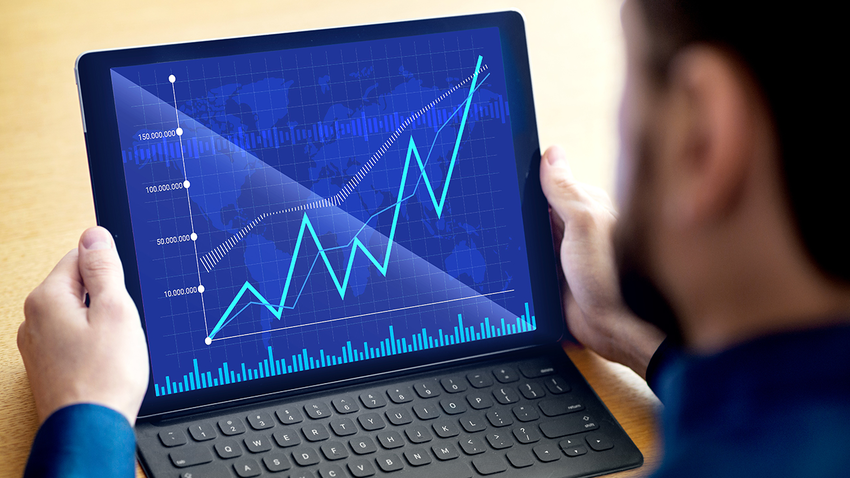
The rise of trading in the Indian market, coupled with the Internet and computational technologies, worked together to form a new trading method. This trading is referred to as algo-trading, which works faster.
To answer the question about the percentage of trading algorithms in the stock market, you must know why it’s elevated and the things that can help algo-trading. The algo-trade in India was introduced in 2008 by the Securities and Exchange Board of India (SEBI). At first, it started with Direct Market Access, which was restricted to institutional investors only. Afterwards, the cost advantage and accuracy were adopted by the trading community, and it kept on growing.
Table of Contents
Algo-Trading Definition
Algo-trading is a method of trading with the financial market using a pre-programmed trade to monitor the market and execute it accordingly. A major role of algo-trading is to automate trades across all asset classes and market segments. As this happens with zero manual processes, the trades are executed based on pre-written conditions set by the professionals.
First, a trader loads their server with trading algos with specific instructions. These algorithms monitor the markets, look for a specific trade or setup, apply it to single or multiple assets, perform the conditions, and execute. But as a professional, you need to have experience or expertise in spotting the trade, setting up the following algorithm setup, and managing it accordingly. Because the concept of a computer algorithm is to loop a set of criteria, applying the same principle to stock trading can be useful and beneficial if done correctly.
Percentage of Algorithmic Trading
Algo-trade has covered up the maximum place in the stock market. In India, the percentage of traders who use algorithms for trading ranges from 50 to 55 per cent. But in other markets, the percentage of algo-trading is around 80–85% of trade. In the United States, Europe, and other Asian markets, the percentage ranges from 60 to 70% of the total trading volume. As algo-trading has been on the rise in the US and all over the world, the number of trades using algorithmic methods is growing day by day.
Why Is Algo-Trading on the Rise?
The answer will be one word, that is, “convenience”, as the trader can handle multiple trades without a constant monitor and rely on the conditions which work according to their trading strategies. However, for more information and analysis on how much of the market is algorithmic trading and why it is increasing, read the following terms:
Automated Feature
As the algo-trading process is entirely automated, traders can set up identification, order several executions that match the setup condition, and execute trades accordingly. Through algo-trading, you can perform a step-by-step execution of instructions, which makes it objective and rule-based trading.
Know the Probability of Success
Trading algorithms are not so easy. There are several steps to developing trading strategies, and along with that, you need to do backtesting. A backtesting process helps users to trade in the stock market. Backtesting will assist you in changing an issue, such as the odds of your trade, into a better capital allocation. The computer won’t stop, and it can monitor the trade and completely examine all the conditions set by the trader, so in short, there are low chances of things getting out of control.
Quick Execution
In algo-trading, trades are identified, checked, and executed in a faster manner. The algorithm is designed in such a way that the parameters and technical indicators are calculated in a split second and execute the trade immediately. As per the time measured, the algo-trade executes in a split second with a good entry or exit trade. The speedy execution is very important if fast-moving markets or intraday trades are needed. If not, then the order cannot be placed, and trade will reduce the profits.
No Human Interference
As the trader sets the following trade, there will not be human interference, which can lead to the collapse of trade. In the real world, many traders believe that they can trade using their emotions, which can lead to poor decisions and even loss of money. Trading has become more precise as a result of mathematical calculations and computational applications.
Consistency
Algorithmic trading is dominated by instructional traders, banks, and professional retail investors. This group of traders often do trading as their daily activity. For regular trading, having a consistent plan can let you make a proper plan. Adhering to your plan can be quite difficult due to frequent market fluctuations. But since algo-trading is automated, trades are executed with consistency, which preserves the trading edge of your strategy.
Following Trends
In algorithmic trading, most traders trade by group or institution and buy and sell stocks on their behalf. These can be seen in the following industries: pension funds, mutual fund management, insurance firms, and Exchange-Traded Funds (ETFs).
The algo-trade is done using a huge setup or machine with high-configuration hardware and sophisticated software, along with a fast Internet connection. The algo-trade is usually in huge sizes, but doing this high-frequency trade requires practice, and breaking the whole amount into small parts and continuing to perform the trade in a specific time interval. You can consider an example of 1 lakh shares as a trade where the set algorithm is to set up a trading instruction that will execute 1,000 share trades every 15 seconds. In this way, the whole process is aligned with the market volatility.
Conclusion
There is a rise in the use of algo-trading around the globe. In this article, you learned about how much of the trading is algorithmic and what’s behind the growing popularity of algo-trading.